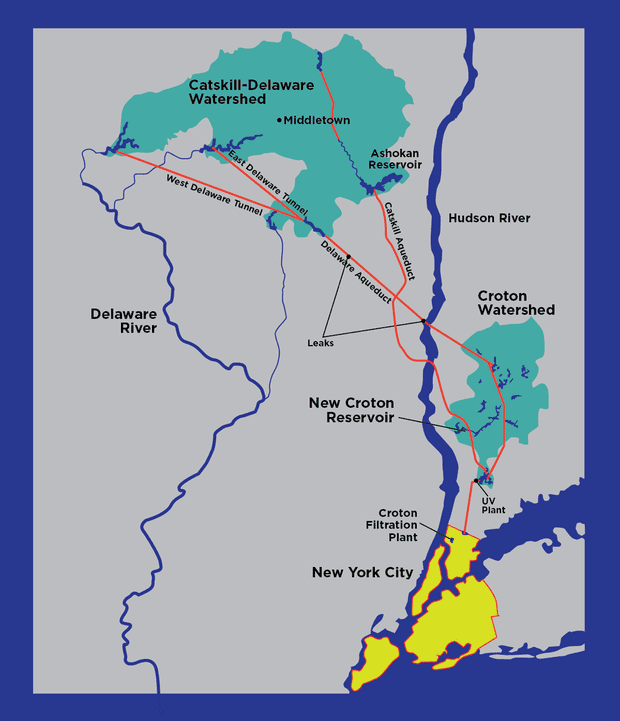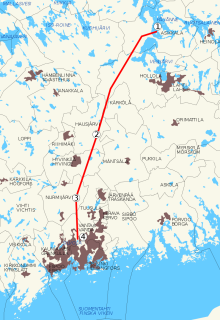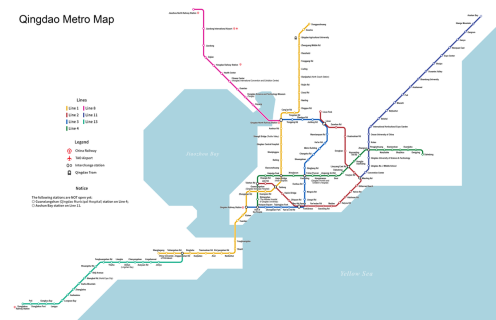The longest tunnels in the world are mainly water tunnels dominating the top five spots. They are followed by metro tunnels that make up the majority of the next five spots with only one hydroelectric transmission line tunnel and one wastewater tunnel coming in between.
Overall water supply tunnels, followed by metro and rail tunnels make up the majority of the list which comprise hundreds of tunnels. However, in this article, we look at the top 10 longest tunnels in the world.
Top 5 longest tunnels in the world
- Delaware Aqueduct Tunnel in USA (length 137 kilometres)
- Päijänne Water Tunnel in Finland (length 120 kilometres)
- Dahuofang Water Tunnel in China (length 85.3 kilometres)
- Orange–Fish River Tunnel in South Africa (length 82.8 kilometres)
- Bolmen Water Tunnel in Sweden (length 82 kilometres)
- Chengdu Metro Line 6 in China (length (length 68.2 kilometres)
- Neelum–Jhelum Hydropower Tunnel in Pakistan (length 68 kilometers)
- Tunel Emisor Oriente in Mexico (length 62.5 kilometres)
- Qingdao Metro Line 1 in China (length 59.82 kilometres)
- Guangzhou Metro Line 18 in China (length 58.3 kilometres)
1. The Delaware Aqueduct Tunnel

The Delaware Aqueduct is the world’s longest continuous tunnel in the world.
The 137 kilometres long tunnel serves as the main water supply tunnel to New York City. It collects water from the Rondout, Cannonsville, Neversink, and Pepacton reservoirs on the west bank of the Hudson River. Through the Chelsea Pump Station, the Delaware Aqueduct Tunnel then delivers the water to the West Branch, Kensico, and Hillview reservoirs on the east bank. The water distribution ends at Hillview in Yonkers, New York.
The aqueduct was drilled on solid rock and constructed between 1939 and 1945. It carries approximately half of New York City’s water supply of 1.3 billion US gallons (4,900,000 m3) per day.
2. Päijänne Water Tunnel

This is a water tunnel in Southern Finland.
At 120 kilometres Päijänne Water Tunnel is the second-longest tunnel in the world. It starts at Asikkalanselkä in Lake Päijänne, the second-largest lake in Finland, and it ends at the Silvola reservoir in Vantaa. The main purpose of the tunnel is to provide fresh water for the over one million people of the Greater Helsinki area. The area includes the cities of Helsinki, Espoo, Vantaa, Hyvinkää, Järvenpää, Kerava, Kauniainen, Kirkkonummi, Sipoo and Tuusula.
The former Porvoo Rural Municipality now merged with the municipality of Porvoo, took part in the construction of the tunnel which took place between 1972 and 1982, however, it has never drawn water from the tunnel for domestic use.
3. The Dahuofang Water Tunnel
The Dahuofang Water Tunnel is the third longest continuous tunnel in the world and the longest of its kind in China. It is located in the Liaoning Province of China and runs for approximately 85.3 kilometres.
The tunnel was built between September 2006 and April 2009. It provides fresh water from the Dahuofang Reservoir to the cities of Shenyang, Fushun, Liaoyang, Anshan, Panjin, Yingkou, and Dalian.
4. Orange–Fish River Tunnel
The Orange-Fish River Tunnel is an irrigation tunnel located in South Africa. Construction works on this tunnel began in 1966 and it was finally completed in 1975. The final product was an 82.8 kilometres long tunnel with a 9 inches-thick mass concrete lining and 19.6 inches diameter.
The tunnel is the longest continuous enclosed aqueduct in the southern hemisphere and the 4th longest tunnel in the world. It diverts water from the Orange River to the Great Fish River and the semi-arid areas of Eastern Cape province.
5. The Bolmen Water Tunnel

Stretching from Lake Bolmen in Kronoberg County to the province of Skåne, the Bolmen Water Tunnel is an 82-kilometre water supply tunnel in Sweden.
The tunnel was built during the period 1975 to 1987. However, the plan for its construction emerged back in the 1960s. Reportedly, the plan was motivated by the foreseen lack of tap water owing to the growth of the population in the province of Scania. The high calcium level of the local water is also said to be one of the reasons the plan for the construction of the Bolmen Water Tunnel was conceived.
With a cross-section area of 9 square meters and a diameter of more than 3 meters, today the tunnel serves approximately 700,000 people with drinking water. approximately 2 cubic meters of water is transported through the tunnel per second. However, its full capacity is 6m³/s.
6. Chengdu Metro Line 6
Line 6 of the Chengdu metro is one of the rapid transit lines in Chengdu. This line starts at Wangcong temple and ends at Lanjiagou. It is 68.223km in length and has 56 stations.
The line began construction in 2016 and was later launched on the 18th day of December 2020. Line 6 is brown and uses a high-capacity 8-car type A train. It has held the record for the longest continuous subway in the world. It became the longest section of a subway to be opened at one in China
7. Neelum–Jhelum Hydropower Tunnel

The Neelum-Jhelum Hydropower Plant is a component of a run-of-the-river hydropower project in Azad Kashmir (AJK) that transfers water from the Neelum River to a power station on the Jhelum River. The tunnel is measured to be 42.3 miles long.
The power plant, which has an installed capacity of 969 MW, on the other hand, is situated 42 kilometres south of Muzaffarabad, Pakistan. The project’s construction started in 2008 after a Chinese consortium won the contract in July 2007. The project was finally finished in August 2018 when the fourth and last unit was synchronized with the national grid on August 13.
Neelum-Jhelum Hydropower Plant reached its full generation capacity of 969 MW on August 14 after several years of delays.
8. Tunel Emisor Oriente
This tunnel is in Mexico City, it is used for wastewater treatment. It is the eighth-longest tunnel in the world at a length of 62,500 meters. This tunnel, serving a 20 million-strong population, was made between 2008 and 2019 using a tunnel-boring machine
It operates at a maximum depth of 200 meters below the earth’s surface and has a discharge capacity of 150 m3/s. This drainage tunnel also serves as a backup outlet for the Emisor Central drainage tube and assists prevent flooding.
The tunnel is also known as the Tunel Emisor Oriente, Eastern Discharge Tunnel, Eastern Wastewater Tunnel, and East Issuing Tunnel.
9. Qingdao Metro Line 1

Line 1 of Qingdao Metro is a subterranean line which is located in Qingdao, china. It is an underground tunnel that runs parallel to the road tunnel and connects the stations of Fenghuangdao and Tuandao, crossing Jiaozhou Bay. The line is 37.3 miles long
The northern section was launched on 24 December 2020. It has 18 stations from Qingdao north railway station towards Donggouozhuang while the southern section of the line runs from Wangjiagang to Qingdao Noth railway station. The latter was launched on December 30 2021
10. Guangzhou Metro line 18
One of the rapid transit express lines in Guangzhou, China is Line 18. The trains in this tunnel can go at up to 160 km/h and it’s measured to be 36.2 miles long.
The line has phase 1 which is 61.3km which connects Wanqingsha in Nansha district with Guangzhou east railway station. This phase has only seven stations and it uses an 8-car type D with an operating speed of 160km/h.
This route connects Zhujiang’s new town, Wanqingsha in Nansha District, Panyu Square in Panyu District, Modiesha in Haizhu District, and Guangzhou East Railway Station in Tianhe District in a south-north direction. The line was launched on 28 September 2021.
